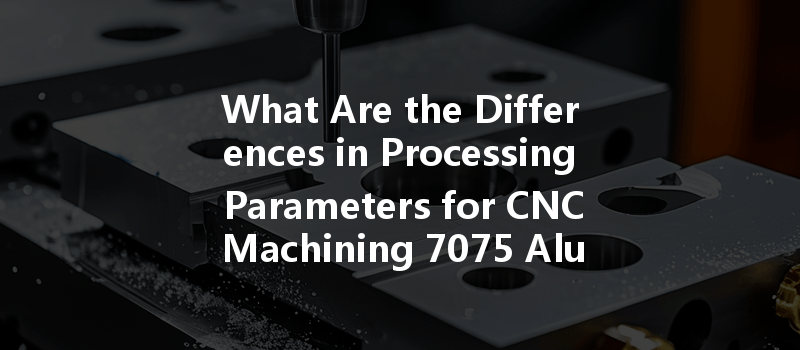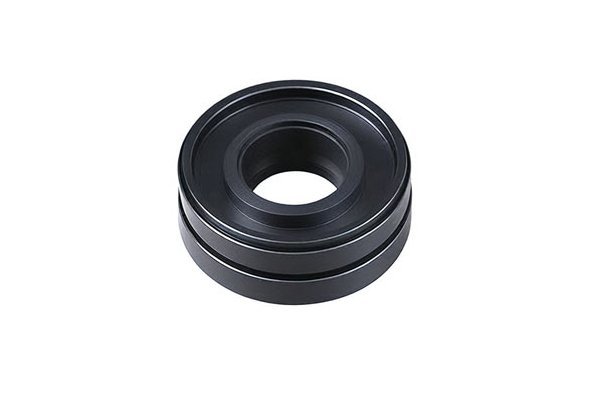—
: A Clash of Materials in CNC Machining
Did you know that aluminum is one of the most widely used materials in manufacturing, thanks to its excellent balance of strength, weight, and corrosion resistance? In particular, 7075 aluminum has gained prominence in industries such as aerospace and automotive due to its superior mechanical properties. On the other hand, transparent acrylic—popularly known by its brand name, Plexiglass—provides lightweight durability and outstanding optical clarity, making it the go-to choice for applications ranging from display cases to illuminated signage. Understanding how these two materials differ in terms of CNC machining parameters is crucial for manufacturers aiming to optimize their production processes and achieve the desired results.
In this blog, we will delve deep into the unique properties of 7075 aluminum and transparent acrylic, comparing their machining processes across several parameters, including cutting speeds, feed rates, tooling requirements, and more. Ultimately, by grasping these differences, manufacturers can make informed decisions in achieving high-precision, high-quality outcomes in their CNC machining operations.
—
Chapter 1: The Basics of CNC Machining
CNC (Computer Numerical Control) machining is a manufacturing process that utilizes computerized controls to operate machine tools. This technology enables high precision and repeatability, allowing for the mass production of complex parts. CNC machining can work with various materials, and understanding how to adapt the process according to material characteristics is vital for success.
1.
CNC machining involves the use of pre-programmed computer software to control machinery. The computer executes a series of commands that dictate the movement of the machine, influencing cutting tools’ actions regarding speed, travel, and location. This automation reduces human error and accelerates precision manufacturing.
1.
Each of these processes can be used for both aluminum and acrylic, but the parameters vary significantly.
—
Chapter 2: Understanding 7075 Aluminum
7075 aluminum is a zinc alloy known for its exceptional mechanical properties. It boasts a high strength-to-weight ratio, making it suitable for high-stress applications.
2.
These properties make 7075 aluminum a popular choice in aerospace, automotive, and pharmaceutical sectors.
2.
—
Chapter 3: The Characteristics of Transparent Acrylic
Transparent acrylic is a synthetic polymer that offers both clarity and strength. Its lightweight nature and versatility make it ideal for various applications.
3.
These properties make acrylic suitable for applications where transparency and shatter resistance are key.
3.
—
Chapter 4: Comparing CNC Machining Parameters
Now that we understand the basic properties and applications of both materials, we can move forward with a detailed comparison of CNC machining parameters for 7075 aluminum and transparent acrylic across various processes.
4.
7075 Aluminum:
Transparent Acrylic:

4.
7075 Aluminum:
Transparent Acrylic:
Optimizing these parameters ensures effective and clean cuts while minimizing material degradation.
4.
7075 Aluminum:
Transparent Acrylic:
—
Chapter 5: Achieving Precision and Surface Finish
Achieving the desired dimensional accuracy and surface finish is critical, especially in high-quality products.
5.
5.
—
Chapter 6: Challenges in CNC Machining
Both materials can present unique challenges during the machining process.
6.
6.
—
Chapter 7: Solutions to Address Machining Challenges
To overcome the challenges posed by each material, manufacturers can adopt several solutions.
7.
7.
—
: Key Takeaways for CNC Machining 7075 Aluminum vs. Transparent Acrylic
In summary, the differences in CNC machining parameters between 7075 aluminum and transparent acrylic are noteworthy. Each material’s unique properties require tailored approaches in cutting speeds, tooling, and handling to achieve high-quality results. Understanding these differences can significantly improve machining practices, reduce costs, and enhance the final product’s performance.
As you venture into CNC machining, consider these insights carefully. Whether you’re cutting aluminum for aerospace applications or crafting transparent displays, remember that selecting the right parameters and strategies can make all the difference. The ability to adapt your process to accommodate the unique characteristics of each material will not only optimize production but also ensure the highest quality and precision in your end product.
As we progress in technology and materials engineering, the demand for high-quality CNC machined parts will continue to rise. Having a robust understanding of not only your materials but also how to effectively machine them is crucial for any modern manufacturer. Reflect on these differences as you plan your next project, and strive for methods that elevate your production capabilities to new heights.






